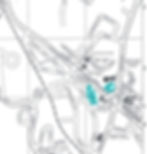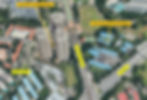From 18 to nine
- Eisen
- Apr 9, 2021
- 6 min read
Updated: May 15, 2021
The merging of schools continues in Singapore, a result of the following:
1. The city-state’s falling birth rate;
2. An uneven geographical distribution of young people, resulting in some towns with younger populations than others;
3. The Ministry of Education’s determination to consolidate teaching resources for economies of scale, and to ensure students get “a fuller school experience” and a greater “diversity of experiences and choices” (their words).
Over the next three years, 18 primary and secondary schools will be merged into nine institutions.
In all, since 2010, 68 schools have been merged, including eight junior colleges in 2019.
At the same time, 23 schools have also opened, most of them in newer towns such as Punggol and Sengkang. That means an overall deficit of 11 schools.
Here’s the list of 18 schools to be merged over the next three years, along with historical trivia for each of them:
2022
In Jurong West town, Juying Primary will merge with Pioneer Primary.
The merged school will occupy Juying’s campus, then move to Tengah town in 2025, becoming the town’s first primary school.
Juying Primary was founded as Ju Eng Public School in Jalan Kayu in 1940. It closed in 1987, and the campus was converted into the Ju Eng Home for Senior Citizens, which still stands along Jalan Kayu today.

The school was revived in 1995 - but at Jurong West Street 91, with the “pinyin-ised” name of Juying, which means “Gathering of Talent”.
Pioneer Primary started life in Juying Primary, with 19 classes held in the latter’s campus in January 1995. By April, Pioneer moved to its current campus at Jurong West Street 81. Next year, its history will come full circle, and it will move back to its birthplace in Juying.
Pioneer Primary’s campus will probably be demolished to make way for the Jurong Region MRT Line’s elevated tracks connecting the future Gek Poh and Tawas stations.

My recommended name for the merged school: First Tengah Primary, just as Toa Payoh town’s first schools were First Toa Payoh Primary and Secondary. Juying can be the school’s Mandarin name.
2023
In Choa Chu Kang town, Teck Whye Secondary will merge with Chua Chu Kang Secondary.
The merged school will occupy Teck Whye’s campus.
Teck Whye Secondary opened as Jalan Teck Whye Secondary School in 1966, named after its address. It dropped the “Jalan” in 1980, and in 2002, moved to Teck Whye Crescent.

Chua Chu Kang Secondary was founded in 1992. Like the Group Representation Constituency and ward of Chua Chu Kang, the school’s name starts with “Chua”, not “Choa”.

My recommended name for the merged school: Teck Whye Secondary.
Townsville Primary of Ang Mo Kio town will merge with Guangyang Primary of Bishan town.
The merged school will occupy Townsville’s campus.
Townsville Primary has the honour of being officially opened twice by Prime Minister Lee Hsien Loong - first in 1985, when he was Minister of State for Defence, and Trade and Industry; and again in 2002, after it merged with Chong Shan Primary and moved to its current campus at Ang Mo Kio Avenue 10, when he was Deputy Prime Minister.

Guangyang Primary has a long history going back more than a hundred years to Kong Yiong School, which was founded in 1918.
Between 1930 and 1992, its campus was at the junction of Kovan Road and Yio Chu Kang Road. In 1984, the primary and secondary branches separated into Kong Yiong Primary and Secondary; in 1988, the primary school’s name was “pinyin-ised” to Guangyang.
Five years later in 1993, the school moved to its current campus at Bishan Street 12. Part of the old campus at Kovan Road lives on as the Pertapis Children’s Home.

My recommended name for the merged school: Townsville Primary. The place name “Guangyang” will live on in Guangyang Secondary, and Guangyang can be the merged school’s Mandarin name.
Telok Kurau Primary of the Bedok Reservoir area will merge with Eunos Primary of the Eunos area.
The merged school will occupy Telok Kurau’s campus.
Telok Kurau Primary is another school with a long history, going back to 1926 as Telok Kurau English School at Telok Kurau Road. Singapore’s first Prime Minister Lee Kuan Yew enrolled in 1930, while Malaysia’s 3rd Prime Minister Hussein Onn followed in 1931.
The school was subsequently renamed Telok Kurau East School, then merged in 1985 with Telok Kurau West School to become Telok Kurau Primary. In 2001, the school took in Bedok Town Primary and moved to its current campus at Bedok Reservoir Road.

Eunos Primary opened on its current site at Jalan Eunos in 1984, taking the place of Jalan Eunos and Jalan Daud schools, which were demolished.

My recommended name for the merged school: Telok Kurau Primary.
In Bedok town, Bedok Green Secondary will merge with Ping Yi Secondary.
The merged school will occupy Bedok Green’s campus.
Bedok Green Secondary opened in 2001.

Ping Yi Secondary was founded in 1930 as Pin Ghee Public School in Kampong Chai Chee, along Changi Road. It closed in 1976, but was revived in 1983 as Ping Yi Secondary at Chai Chee Street.

In 2011, Bedok Town Secondary absorbed Chai Chee Secondary. In 2016, Ping Yi Secondary absorbed Bedok Town. Soon, it will merge again.
My recommended name for the merged school: Ping Yi Secondary.
In Clementi town, Tanglin Secondary will merge with New Town Secondary.
The merged school will occupy New Town’s campus.
Like Ping Yi, Tanglin Secondary has a history of multiple mergers.
Tanglin Integrated Secondary Technical School opened in 1964 in Tanglin Halt Estate, hence its name. It acquired its present name when it moved to its current site at West Coast Road in 1993.

In 2007, Ghim Moh Secondary and Jin Tai Secondary merged to form Clementi Woods Secondary. In 2016, Clementi Woods was folded into Tanglin.
New Town Secondary opened in 1965, one year after Tanglin, just across Commonwealth Avenue from Tanglin; at the time, the “New Town” referred to Queenstown New Town. In 1969, it absorbed the neighbouring Baharuddin Vocational School. In 1998, it moved to Dover Road.

New Town’s former campus, now known as 121 Queensway, is still standing at the junction of Queensway and Commonwealth Avenue. Last year, it was converted into temporary housing for migrant workers as part of COVID-19 measures.

My recommended name for the merged school: Tanglin New Town Secondary.
In Bukit Panjang town, Greenridge Secondary will merge with Fajar Secondary.
The merged school will occupy Fajar’s campus.
Greenridge Secondary was founded as Dunearn Secondary Technical School in 1964. It was part of a cluster of four schools with the name Dunearn, at the junction of Dunearn Road and Hillcrest Road. In 1992, it took on its current name and moved to its current site at Bukit Panjang Ring Road.

The four Dunearn schools have been replaced by the prestigious schools of Nanyang Girls’ High School, National Junior College, and Raffles Girls’ Primary School.
Fajar Secondary was founded in 1994, first occupying the campus of Greenridge Secondary, before moving to its current site at Gangsa Road two years later. In 2016, it absorbed Chestnut Drive Secondary, a school founded in 1968.

Now, Greenridge and Fajar will come together again.
My recommended name for the merged school: Greenridge Secondary.
In and around the city, Stamford Primary will merge with Farrer Park Primary.
The merged school will occupy Farrer Park’s campus.
Stamford Primary was founded as Stamford Girls’ School in 1951, named as such even though it was at the junction of Waterloo Street and Middle Road, nowhere near Stamford Road. It moved a short distance to its current location at Victoria Lane in 1986.
Its former campus still stands as Stamford Arts Centre today.

Stamford Primary is currently the last primary or secondary school inside the boundaries of the old Town of Singapore.
Farrer Park Primary was formed from multiple mergers.
May North and May South primary schools were founded between 1966 and 1969 at May Road, off Towner Road. They later merged into May Primary School. May Primary then merged with Boon Keng Primary in 2002 and moved to the Farrer Park area, taking on the name Farrer Park Primary.

My recommended name for the merged school: Stamford Farrer Park Primary.
2024
In Woodlands town, Fuchun Secondary will merge with Woodlands Ring Secondary.
The merged school will occupy Woodlands Ring’s campus.
Fuchun Secondary was founded in 1986.

Woodlands Ring Secondary was founded in 1998. In its first two years, it served as a holding school for Woodlands Ring Primary, Evergreen Primary, Sembawang Secondary and Orchid Park Secondary.

My recommended name for the merged school: Woodlands Ring Secondary. Fuchun can be the school’s Mandarin name.
***
Whenever schools are merged, layers of history fold into each other, and inevitably, something is lost - be it architecture, site-specific memories, or physical records. I hope efforts are made to conserve these as much as possible.
